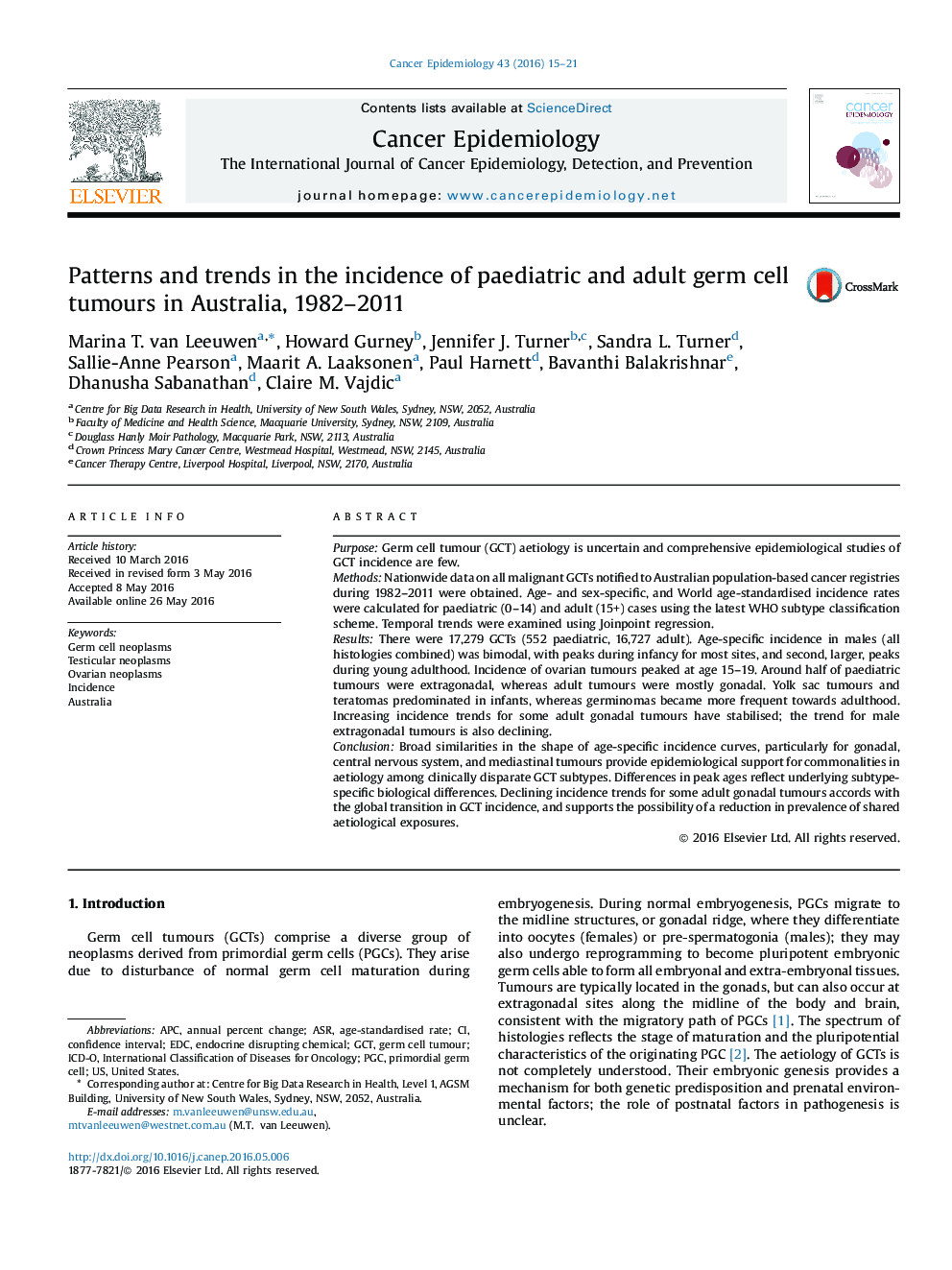| Article ID | Journal | Published Year | Pages | File Type |
|---|---|---|---|---|
| 2108812 | Cancer Epidemiology | 2016 | 7 Pages |
•Population-based Australian data support commonalities in germ cell tumour aetiology.•Incidence of some adult gonadal tumours has stabilised.•Findings suggestive of a reduction in prevalence of shared aetiological exposures.
PurposeGerm cell tumour (GCT) aetiology is uncertain and comprehensive epidemiological studies of GCT incidence are few.MethodsNationwide data on all malignant GCTs notified to Australian population-based cancer registries during 1982–2011 were obtained. Age- and sex-specific, and World age-standardised incidence rates were calculated for paediatric (0–14) and adult (15+) cases using the latest WHO subtype classification scheme. Temporal trends were examined using Joinpoint regression.ResultsThere were 17,279 GCTs (552 paediatric, 16,727 adult). Age-specific incidence in males (all histologies combined) was bimodal, with peaks during infancy for most sites, and second, larger, peaks during young adulthood. Incidence of ovarian tumours peaked at age 15–19. Around half of paediatric tumours were extragonadal, whereas adult tumours were mostly gonadal. Yolk sac tumours and teratomas predominated in infants, whereas germinomas became more frequent towards adulthood. Increasing incidence trends for some adult gonadal tumours have stabilised; the trend for male extragonadal tumours is also declining.ConclusionBroad similarities in the shape of age-specific incidence curves, particularly for gonadal, central nervous system, and mediastinal tumours provide epidemiological support for commonalities in aetiology among clinically disparate GCT subtypes. Differences in peak ages reflect underlying subtype-specific biological differences. Declining incidence trends for some adult gonadal tumours accords with the global transition in GCT incidence, and supports the possibility of a reduction in prevalence of shared aetiological exposures.
